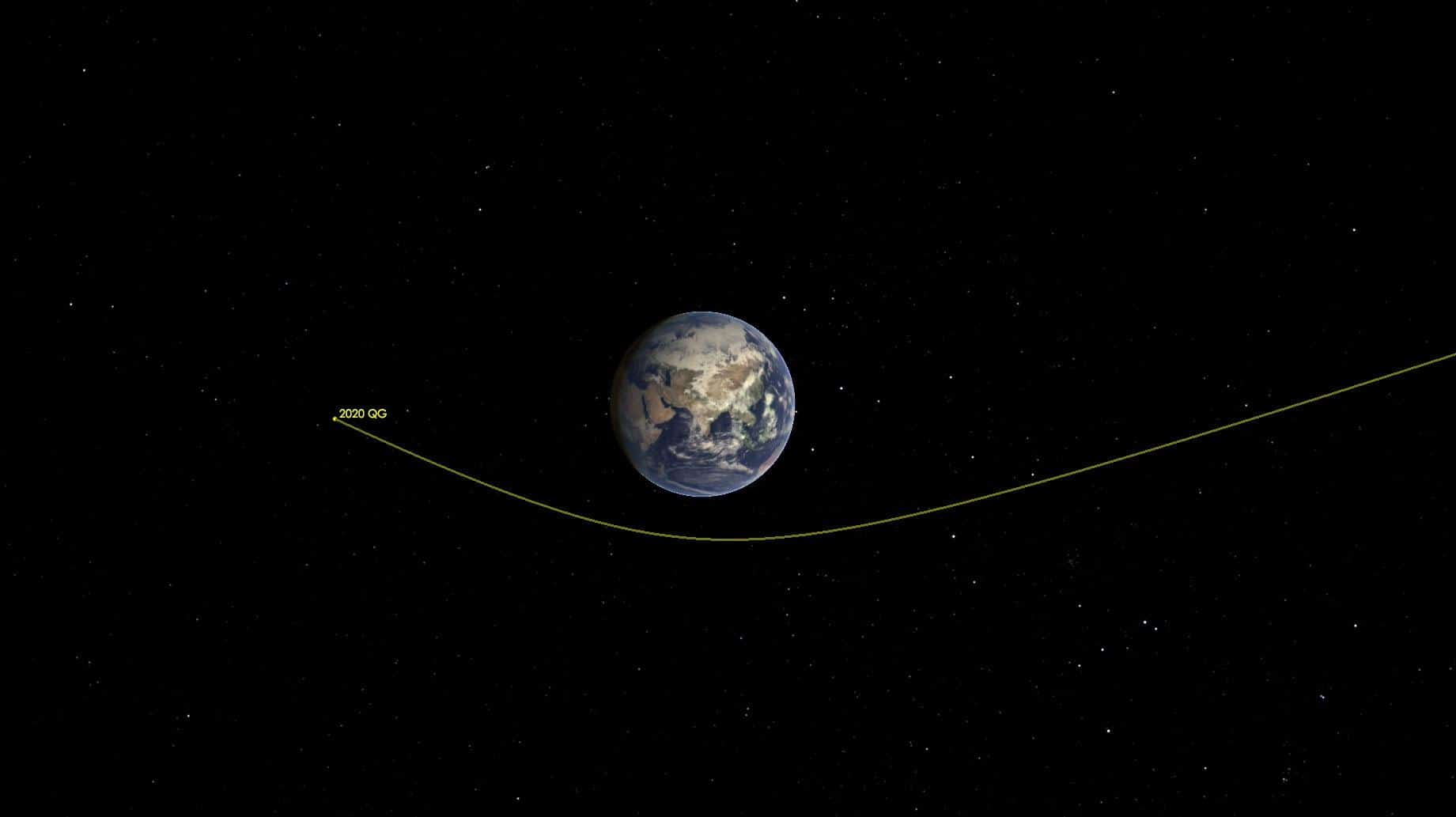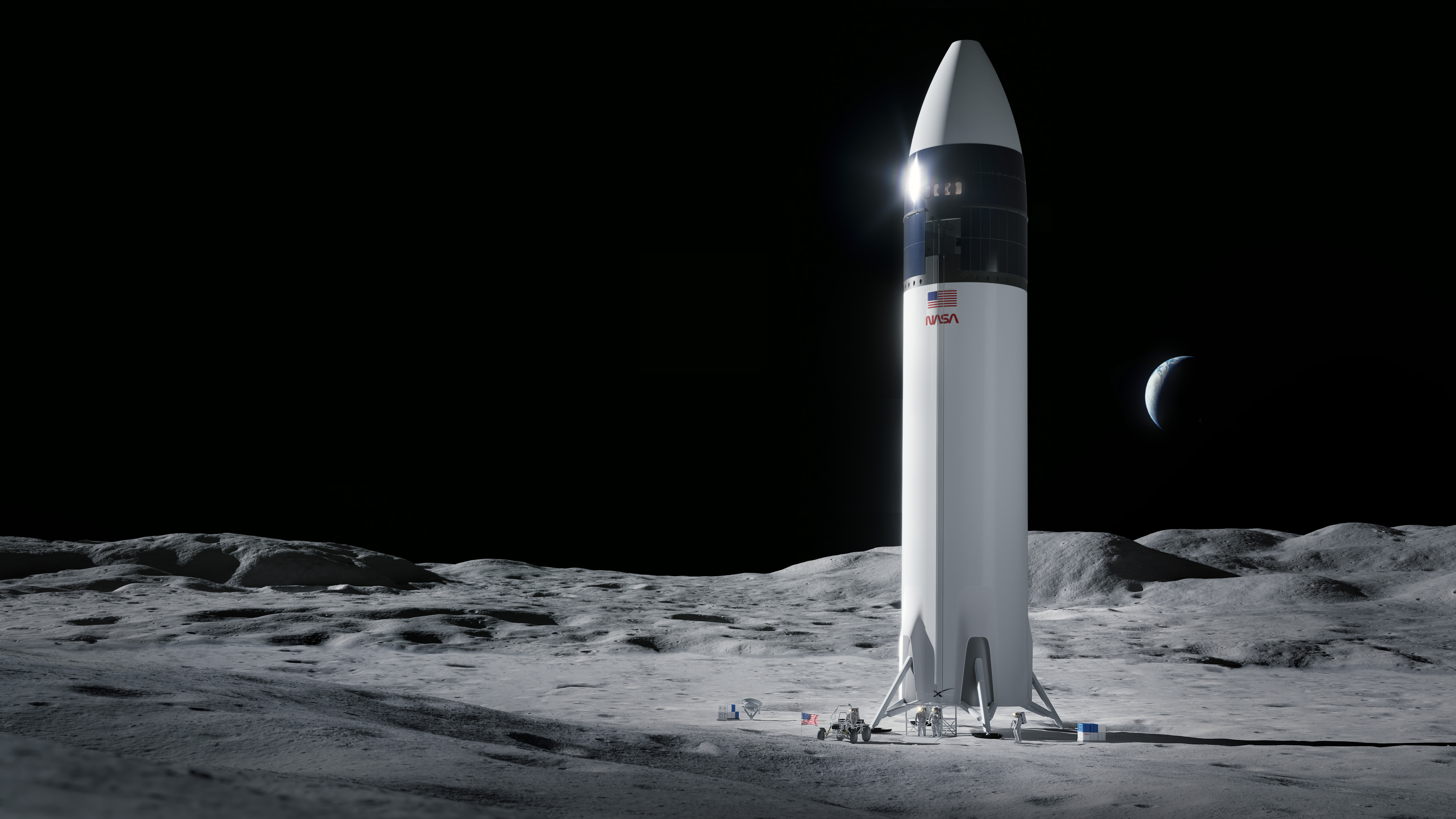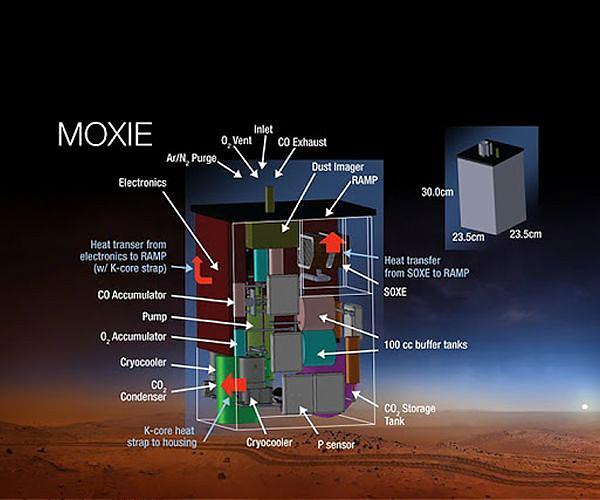Install the app
How to install the app on iOS
Follow along with the video below to see how to install our site as a web app on your home screen.
Note: This feature may not be available in some browsers.
You are using an out of date browser. It may not display this or other websites correctly.
You should upgrade or use an alternative browser.
You should upgrade or use an alternative browser.
Avaruus
- Viestiketjun aloittaja Juke
- Aloitus PVM
Patu
Kenraali
Ei lennä vielä hetkeen, softa vaatii päivitystä: https://mars.nasa.gov/technology/he...sses-toward-ingenuity-s-first-flight-on-mars/Siirtyi, aikaisintaan keskiviikkona: https://mars.nasa.gov/technology/he...r-flight-delayed-to-no-earlier-than-april-14/

Asteroideja halutaan ydinpommittaa - näin se kävisi | Verkkouutiset
Asteroideja halutaan ydinpommittaa - näin se kävisi | Verkkouutiset
 www.verkkouutiset.fi
www.verkkouutiset.fi
rty19
Greatest Leader
Ranska liittynee tuohon ryhmään muutaman vuoden sisällä.Russia, China and US all listed as capable of anti-satellite proximity operations in geostationary orbit.
Nasa on valinnut SpaceX:n avaruuslaivan lentämään kuuhun!
Saattaapi vielä tässä vaiheessa tuo maahan laskeutuminen arveluttaa astronautteja.

 www.nasa.gov
www.nasa.gov
Saattaapi vielä tässä vaiheessa tuo maahan laskeutuminen arveluttaa astronautteja.
NASA Picks SpaceX to Land Next Americans on Moon
NASA is getting ready to send astronauts to explore more of the Moon as part of the Artemis program, and the agency has selected SpaceX to continue development of the first commercial human lander that will safely carry the next two American astronauts to the lunar surface. At least one of those astronauts will make history as the first woman on the Moon. Another goal of the Artemis program includes landing the first person of color on the lunar surface.
The agency’s powerful Space Launch System rocket will launch four astronauts aboard the Orion spacecraft for their multi-day journey to lunar orbit. There, two crew members will transfer to the SpaceX human landing system (HLS) for the final leg of their journey to the surface of the Moon. After approximately a week exploring the surface, they will board the lander for their short trip back to orbit where they will return to Orion and their colleagues before heading back to Earth.
The firm-fixed price, milestone-based contract total award value is $2.89 billion.
"With this award, NASA and our partners will complete the first crewed demonstration mission to the surface of the Moon in the 21st century as the agency takes a step forward for women’s equality and long-term deep space exploration,” said Kathy Lueders, NASA's associate administrator for Human Explorations and Operations Mission Directorate. “This critical step puts humanity on a path to sustainable lunar exploration and keeps our eyes on missions farther into the solar system, including Mars.”
SpaceX has been working closely with NASA experts during the HLS base period of performance to inform its lander design and ensure it meets NASA’s performance requirements and human spaceflight standards. A key tenet for safe systems, these agreed-upon standards range from areas of engineering, safety, health, and medical technical areas.
“This is an exciting time for NASA and especially the Artemis team,” said Lisa Watson-Morgan, program manager for HLS at NASA’s Marshall Space Flight Center in Huntsville, Alabama. “During the Apollo program, we proved that it is possible to do the seemingly impossible: land humans on the Moon. By taking a collaborative approach in working with industry while leveraging NASA’s proven technical expertise and capabilities, we will return American astronauts to the Moon’s surface once again, this time to explore new areas for longer periods of time.”
SpaceX’s HLS Starship, designed to land on the Moon, leans on the company’s tested Raptor engines and flight heritage of the Falcon and Dragon vehicles. Starship includes a spacious cabin and two airlocks for astronaut moonwalks. The Starship architecture is intended to evolve to a fully reusable launch and landing system designed for travel to the Moon, Mars, and other destinations.
The HLS award is made under the Next Space Technologies for Exploration Partnerships (NextSTEP-2) Appendix H Broad Agency Announcement (BAA).
In parallel with executing the Appendix H award, NASA intends to implement a competitive procurement for sustainable crewed lunar surface transportation services that will provide human access to the lunar surface using the Gateway on a regularly recurring basis beyond the initial crewed demonstration mission.
With NASA’s Space Launch System rocket, Orion spacecraft, HLS, and the Gateway lunar outpost, NASA and its commercial and international partners are returning to the Moon for scientific discovery, economic benefits, and inspiration for a new generation. Working with its partners throughout the Artemis program, the agency will fine-tune precision landing technologies and develop new mobility capabilities to enable exploration of new regions of the Moon. On the surface, the agency has proposed building a new habitat and rovers, testing new power systems and more. These and other innovations and advancements made under the Artemis program will ensure that NASA and its partners are ready for human exploration’s next big step—the exploration of Mars.
For more information about the human landing system, visit:

As Artemis Moves Forward, NASA Picks SpaceX to Land Next Americans on Moon - NASA
NASA is getting ready to send astronauts to explore more of the Moon as part of the Artemis program, and the agency has selected SpaceX to continue
Nasa on valinnut SpaceX:n avaruuslaivan lentämään kuuhun!
Saattaapi vielä tässä vaiheessa tuo maahan laskeutuminen arveluttaa astronautteja.
NASA Picks SpaceX to Land Next Americans on Moon

As Artemis Moves Forward, NASA Picks SpaceX to Land Next Americans on Moon - NASA
NASA is getting ready to send astronauts to explore more of the Moon as part of the Artemis program, and the agency has selected SpaceX to continuewww.nasa.gov
Miksi siis maahanlaskeutuminen mahtaa arvelluttaa astronautteja ? SpaceX on useamman kerran laskeutunut avaruudesta maahan ja yhtään ihmistä ei oo kuollut. Ei ne nyt mihinkään boosteriin sentään ole ahtautumassa kun ovat tulossa alas siihen maahan tuloon löytyy ihan alus kyllä joka on toiminut tositesteissä joka kerta. Ei minua ainakaan astronauttina yhtään epäilyttäisi maahanlaskeutiminen. Kyllä ne vaarallisimmat vaiheet lennosta löytyy ihan muusta kohtaa kuin tullessa maahan.
Se oli lähinnä vitsi koskien noita spaceshipin toistaiseksi epäonnistuneita laskeutumisyrityksiä. Jäi hymiöt perästä.Miksi siis maahanlaskeutuminen mahtaa arvelluttaa astronautteja ? SpaceX on useamman kerran laskeutunut avaruudesta maahan ja yhtään ihmistä ei oo kuollut. Ei ne nyt mihinkään boosteriin sentään ole ahtautumassa kun ovat tulossa alas siihen maahan tuloon löytyy ihan alus kyllä joka on toiminut tositesteissä joka kerta. Ei minua ainakaan astronauttina yhtään epäilyttäisi maahanlaskeutiminen. Kyllä ne vaarallisimmat vaiheet lennosta löytyy ihan muusta kohtaa kuin tullessa maahan.
Loppujen lopuksi SpaceX toimittaa vain aluksen joka laskeutuu kuuhun ja tietysti myös nousee sieltä. SpaceX ei lennätä astronautteja maasta kuun kiertoradalle ja takaisin.
Kyllä se vaan avaruushistoriankin mukaan on se lennon vaarallisin vaihe. Yhteensä 8 ihmistä on kuollut maahanpaluussa, 3 testauksessa/harjoittelussa, 3 avaruudessa (tämäkin liittyi itse asiassa paluuseen ja paluun tekniikan pettämiseen) ja 7 lähdössä. Paluussa ongelmana on erittäin voimakas nopeuden vähentäminen kitkan avulla. Lisäksi "ikkuna" johon palaavan aluksen pitää osua on sangen pieni. Lopussa on vielä saatava kosketus maan/meren pintaan riittävän pehmeästi. Konevoimaa ei juurikaan ole käytettävissä korjausliikkeisiin, päinvastoin kuin nousussa tai avaruudessa liikehdinnässä.Miksi siis maahanlaskeutuminen mahtaa arvelluttaa astronautteja ? SpaceX on useamman kerran laskeutunut avaruudesta maahan ja yhtään ihmistä ei oo kuollut. Ei ne nyt mihinkään boosteriin sentään ole ahtautumassa kun ovat tulossa alas siihen maahan tuloon löytyy ihan alus kyllä joka on toiminut tositesteissä joka kerta. Ei minua ainakaan astronauttina yhtään epäilyttäisi maahanlaskeutiminen. Kyllä ne vaarallisimmat vaiheet lennosta löytyy ihan muusta kohtaa kuin tullessa maahan.
Minä en ihmettele yhtään, että tätä pelätään kaikkein eniten.
Viimeksi muokattu:
Miksi siis maahanlaskeutuminen mahtaa arvelluttaa astronautteja ?
Koko homma on vaarallinen. Ei vain se laskeutuminen. John Glenn aikoinaan sanoi "I felt exactly how you would feel if you were getting ready to launch and knew you were sitting on top of 2 million parts — all built by the lowest bidder on a government contract."
Laskeutumisessa ei ole mitään ongelmaa koska ne on testattu ja paluu maahan tapahtuu perinteisellä kapselilla. Mutta onhan se homma kun sut laitetaan kuplan kokoiseen laiteeseen joka kuumenee ilmakehän läpi syöksyessä useampaan tuhanteen asteeseen. Ja kaiken päälle sä menet hetkeksi yhteyden maahan ... silti se on turvallisin konsti meille tällä hetkellä.
Sukkula on mennyttä päivää. Sille ei voi mitään. Mutta silti itse ainakin odottelen että niitä single- stage-to-orbit koneita saadaan aikaiseksi. Kuitenkin kun katselee tuota rakettibisnestä. Varsinkin jenkeissä niin siinä on samaa meininkiä kuin .com boomissa. Puikko yhtiöitä on monia ja pitkään aikaan ei ole kuulunut mitään ULAn dominasista tuolla markkinalla.
Marssin kohdalla ongelma laskeutumisessa on sen ilmakehä. Se ei ole kovin tiheä. Kuun kohdalla isoin ongelma tällä hetkellä on että niitä laskeutumisalustoja ei ole olemassa. Silti heikko painovoima ja taitava kuski voi tuoda laskeutujan tontille pelkällä CRC päästöillä, ilman että polttaa rakettejä hirveästi. Sitten kun niitä alustoja on niin se on aika rutiini meininkiä.
Venuksella ongelma on että se et halua mennä sinne pilviverhon alle. Joten joudut jarruttamaan kulkuneuvon stabiili radalle ja siinä menee aikaa. Sieltä sitten sopivassa kulmassa ajat alas hyvin tiheään ilmakehään, joka on myös kuuma. Jos vehkeet kestää niin mahdollisuus on että vietät ajan pilvien yläpuolella, nauttien todella suuresta aurinkosta taivaalla.
Auttaako tämä ymmärtämään?
tulikomento
Supreme Leader
Aikalaisfilmi 60-luvulta. Kuumodulin suunnittelutiimiä johtanut Grummanin Tom Kelly esittelee alusta.
NASA's Perseverance rover has been marking milestones on Mars since landing on the Red Planet in February. Its latest historic accomplishment is the first creation of oxygen from carbon dioxide in the thin Mars atmosphere. Mission time is measured in sols, or Martian days. Oxygen production was achieved early in the evening of April 20, or early morning on Sol 60 in Jezero Crater.
MOXIE (Mars Oxygen In-situ Resource Utilization Experiment), a small, gold box-shaped instrument on the rover, successfully demonstrated a solid oxide electrolysis technology for converting the Martian atmosphere to oxygen. The atmosphere on Mars is about 95% carbon dioxide.
MOXIE's first oxygen run produced 5.4 grams of oxygen in an hour. The power supply limits potential production to 12 g/hr - about the same amount that a large tree would produce.

MOXIE creates oxygen on Mars
Boston MA (SPX) Apr 22, 2021 - NASA's Perseverance rover has been marking milestones on Mars since landing on the Red Planet in February. Its latest historic accomplishment is the first creation of oxygen from carbon dioxide in t
www.marsdaily.com
Koko homma on vaarallinen. Ei vain se laskeutuminen. John Glenn aikoinaan sanoi "I felt exactly how you would feel if you were getting ready to launch and knew you were sitting on top of 2 million parts — all built by the lowest bidder on a government contract."
Laskeutumisessa ei ole mitään ongelmaa koska ne on testattu ja paluu maahan tapahtuu perinteisellä kapselilla. Mutta onhan se homma kun sut laitetaan kuplan kokoiseen laiteeseen joka kuumenee ilmakehän läpi syöksyessä useampaan tuhanteen asteeseen. Ja kaiken päälle sä menet hetkeksi yhteyden maahan ... silti se on turvallisin konsti meille tällä hetkellä.
Sukkula on mennyttä päivää. Sille ei voi mitään. Mutta silti itse ainakin odottelen että niitä single- stage-to-orbit koneita saadaan aikaiseksi. Kuitenkin kun katselee tuota rakettibisnestä. Varsinkin jenkeissä niin siinä on samaa meininkiä kuin .com boomissa. Puikko yhtiöitä on monia ja pitkään aikaan ei ole kuulunut mitään ULAn dominasista tuolla markkinalla.
Marssin kohdalla ongelma laskeutumisessa on sen ilmakehä. Se ei ole kovin tiheä. Kuun kohdalla isoin ongelma tällä hetkellä on että niitä laskeutumisalustoja ei ole olemassa. Silti heikko painovoima ja taitava kuski voi tuoda laskeutujan tontille pelkällä CRC päästöillä, ilman että polttaa rakettejä hirveästi. Sitten kun niitä alustoja on niin se on aika rutiini meininkiä.
Venuksella ongelma on että se et halua mennä sinne pilviverhon alle. Joten joudut jarruttamaan kulkuneuvon stabiili radalle ja siinä menee aikaa. Sieltä sitten sopivassa kulmassa ajat alas hyvin tiheään ilmakehään, joka on myös kuuma. Jos vehkeet kestää niin mahdollisuus on että vietät ajan pilvien yläpuolella, nauttien todella suuresta aurinkosta taivaalla.
Auttaako tämä ymmärtämään?
Ne videot mitä olen itse katsellut niin kyllä niissä astronautit ovat pitäneet yleensä muita vaiheita vaarallisempana kuin tätä maahan saapumista. Montakos SpaceX:n CrewDragonia on tuhoutunut ? Jos ei lasketa mukaan niitä joita on tarkoituksella tuhottu et saadaan dataa. Lähinnä puhuin SpaceX:stä kun heillehän tämä soppari oli annettu. Mars ja Venus ovat viel niin kaukana et niistä on turha edes puhua viel tosissaan. Mut sinnekin uskon et mennään sit ajallaan ainakii osittain SpaceX:n vehkeillä jos mietitään ensimmäisiä firmoi siel. Nasat ja muut ovat tehottomia toimimaan ja polttavat rahaa helvetin paljon enemmän kuin esim juuri SpaceX ja silti edellä mainittu firma on se joka on lähiaikoina saavuttanut kaiken mihin mitä ei pidetty edes mahdollisena ennen. Amazonin ukon touhuja pidän lähinä harrasteluna ja sillä lieneen tarkoitus vain viedä rikkailta rahat pois et voivat sanoa käyneensä avaruudessa muutaman tunnin max. Ehkä saavat joskus rakennettua jonku paikan missä voi yöpyä ihan et saadaan lippujen hintaan vähä lisää numeroita. Jos johonkii yksityiseen rahat pitäisi laittaa minä laittaisin ne Elonin firmaan. Sillä on vaan aika mahtava track record.
Mars ja Venus ovat viel niin kaukana et niistä on turha edes puhua viel tosissaan.
Kumpaakin voi mennä nykyteknologialla, jos tahtoa riippuu. Marssiin kehitetään enemmän teknologiaa, mutta seuraavan kahden vuosikymmenen aikana esim miehitetty ohilento on mahdollista tehdä Venuksen kohdalla hyvinkin lyhyellä aikataululla. Isoin ongelma on ollut avaruuteen pääsy kohtuu hinnalla. Yksityinen avaruustelakka missä valmistetaan pitkän matkan vehkeitä on se seuraava iso, ja se voi tapahtua yksityisten puolella samalla kun kuuta valloitetaan.
Henkilökohtaisesti pidän sitä hulluutena että emme hyödyntäisi kuuta tukikohtana ja satamana meidän systeemille. Ei ole mitään järkeä pakata ukkoja space-xn starshippiin ja lähettää niitä kuuden kuukauden matkalle Marssiin. Tarvitaan isompi alus ja jos on isompi alus niin mukaan varmaan mahtuu tarpeet kiertorata tukikohdan ja siten infrastruktuurin lisäämiseksi tänä pioneeri aikana. Sitten joskun myöhemmin viiden vuosikymmen jälkeen voi ajatella että matkaisi luksus kyydissä yhdessä pikku aluksessa planeetalta toiselle.
Fremen
Greatest Leader
Lisäksi on se lämpösuojan ionosaatiosta johtuva muutaman minuutin black out, joka on aina huolestuttavaa lennon toiseksi riskillisimmässä kohdassa...Kyllä se vaan avaruushistoriankin mukaan on se lennon vaarallisin vaihe. Yhteensä 8 ihmistä on kuollut maahanpaluussa, 3 testauksessa/harjoittelussa, 3 avaruudessa (tämäkin liittyi itse asiassa paluuseen ja paluun tekniikan pettämiseen) ja 7 lähdössä. Paluussa ongelmana on erittäin voimakas nopeuden vähentäminen kitkan avulla. Lisäksi "ikkuna" johon palaavan aluksen pitää osua on sangen pieni. Lopussa on vielä saatava kosketus maan/meren pintaan riittävän pehmeästi. Konevoimaa ei juurikaan ole käytettävissä korjausliikkeisiin, päinvastoin kuin nousussa tai avaruudessa liikehdinnässä.
Minä en ihmettele yhtään, että tätä pelätään kaikkein eniten.
et kuitenkaan istu enää kemiallisen pommin nokassa, "ainoa" haaste entry-ikkunaan osumisen jälkeen on nopeuden vuotaminen lämpönä, spesifikaatioiden mukaisesti.
Tosin yhtä vähän kontrollia tuossa viime kädessä lienee astronauteilla, noh ainakin nousun alkuvaiheissa sieltä voisi potentiaalisesti ejektoida itsensä hengissä, jos joku sitä joskus kokeilisi. Ja selviäisi hengissä.

